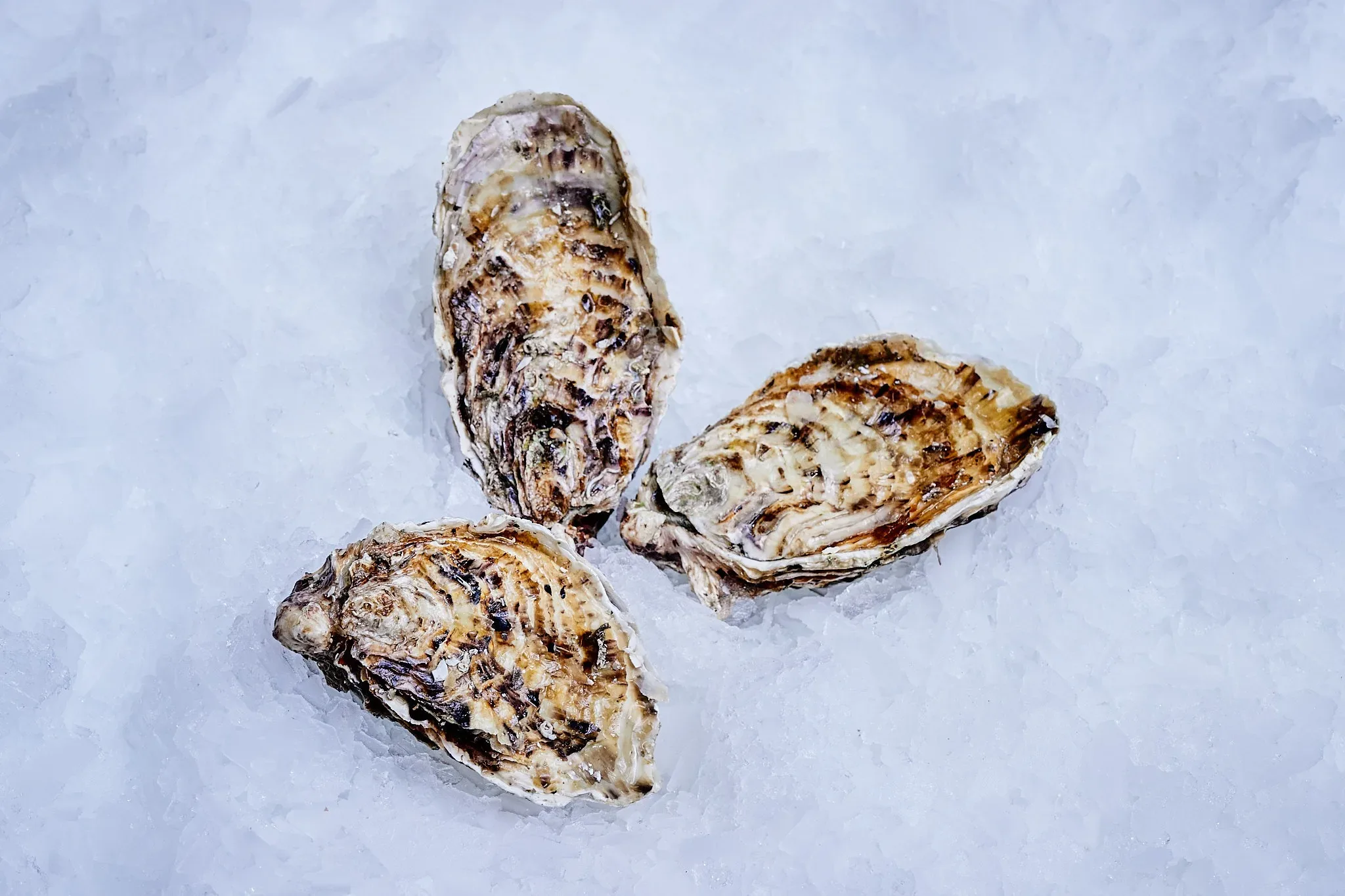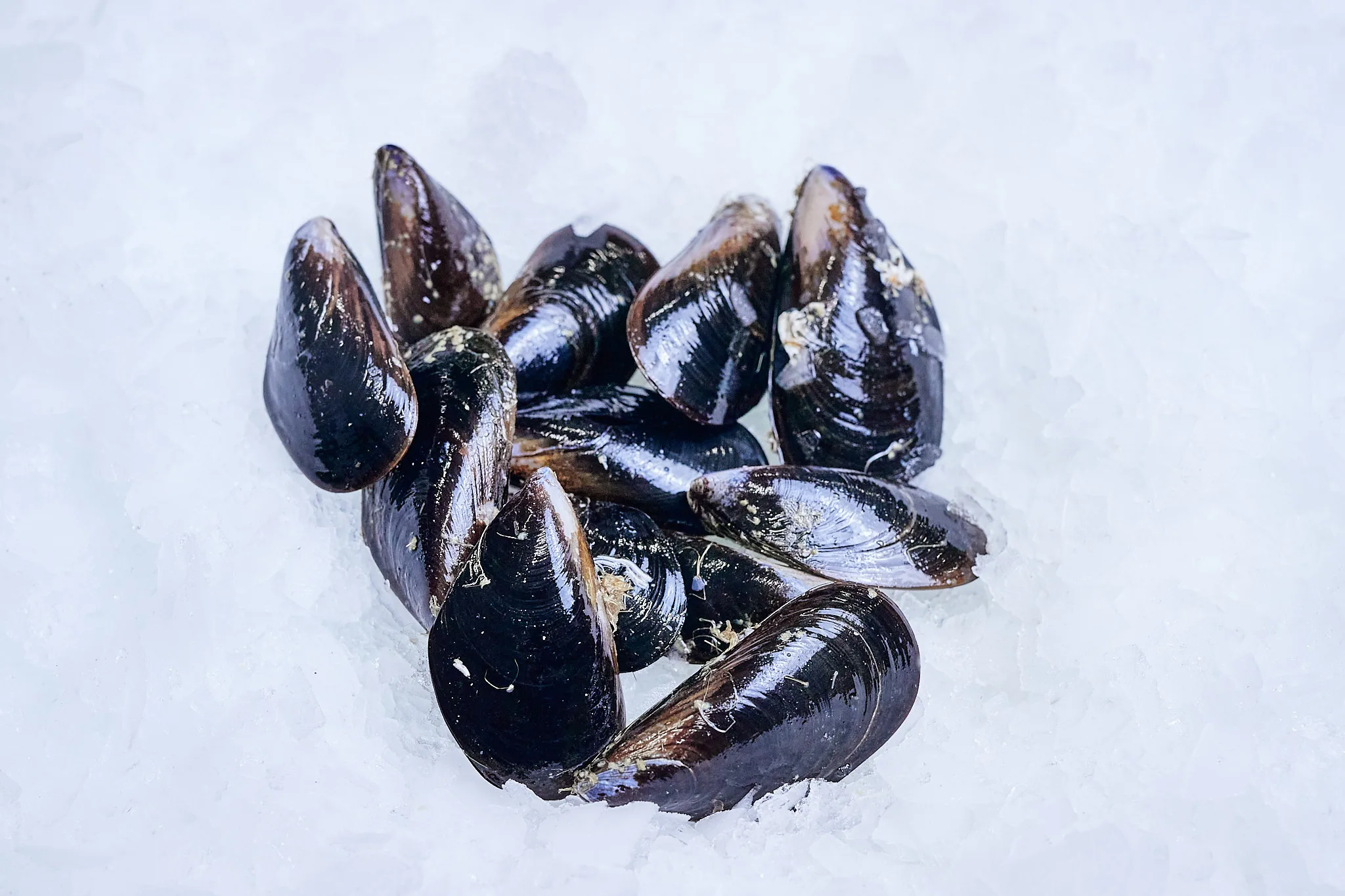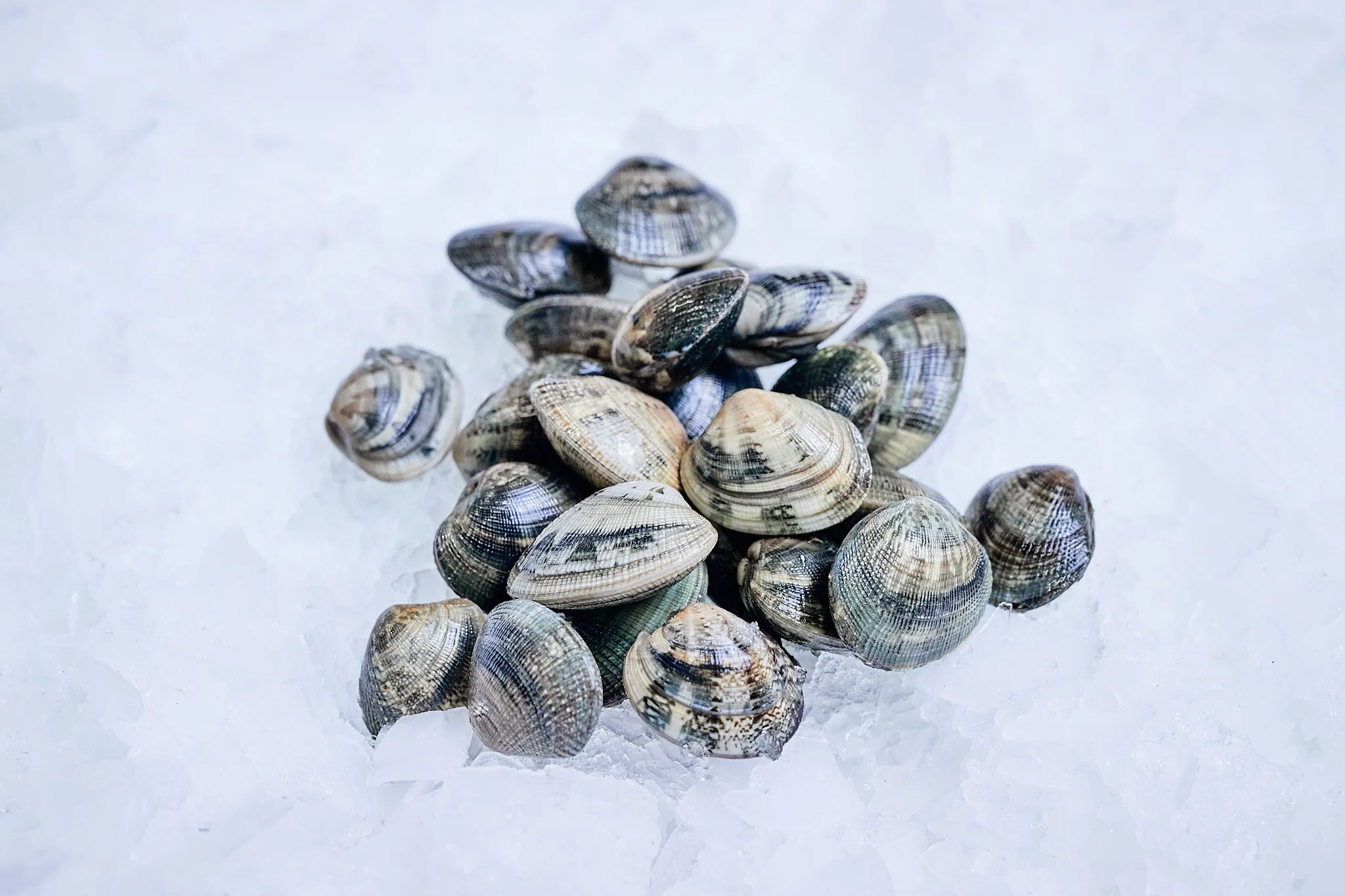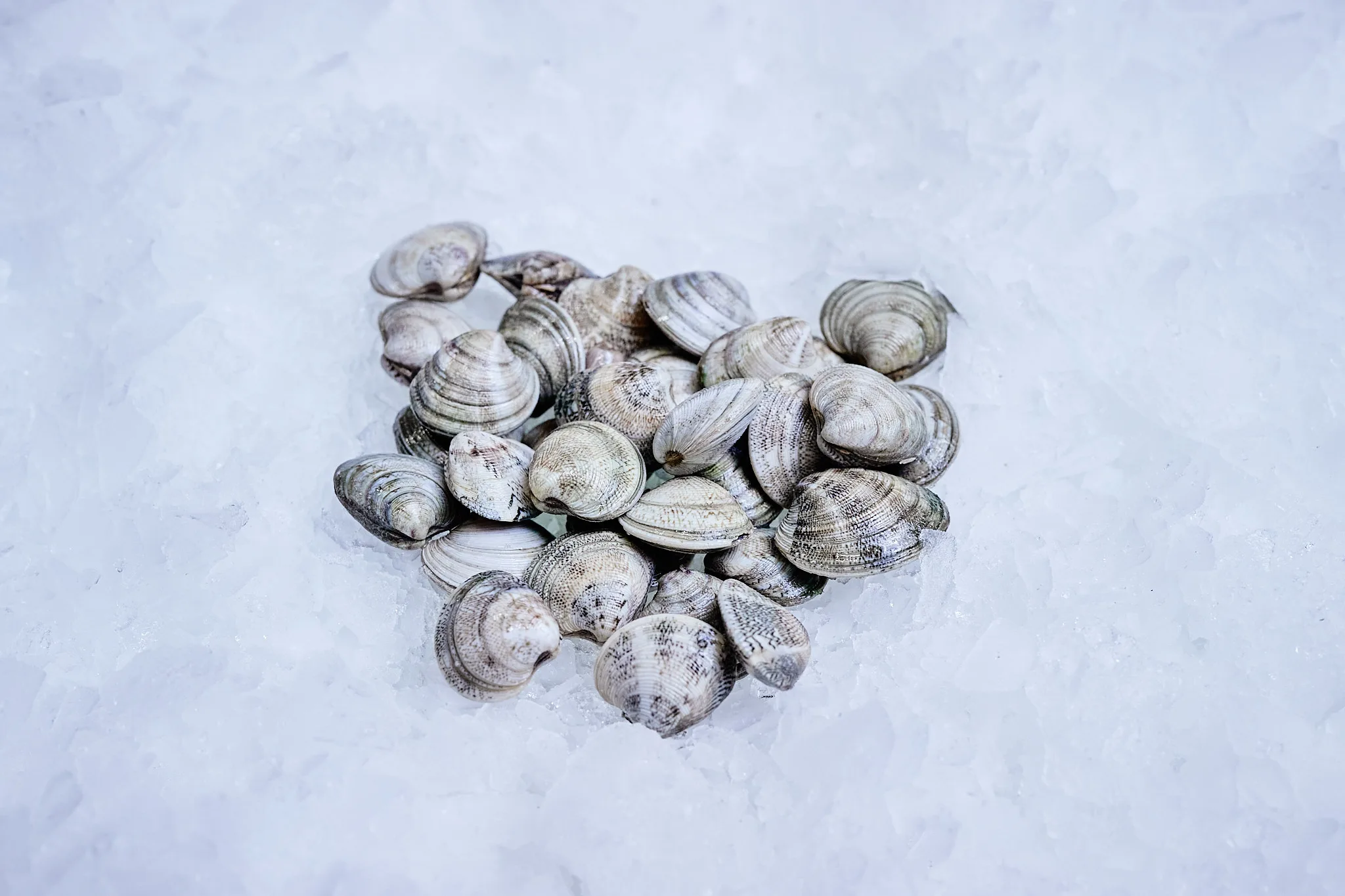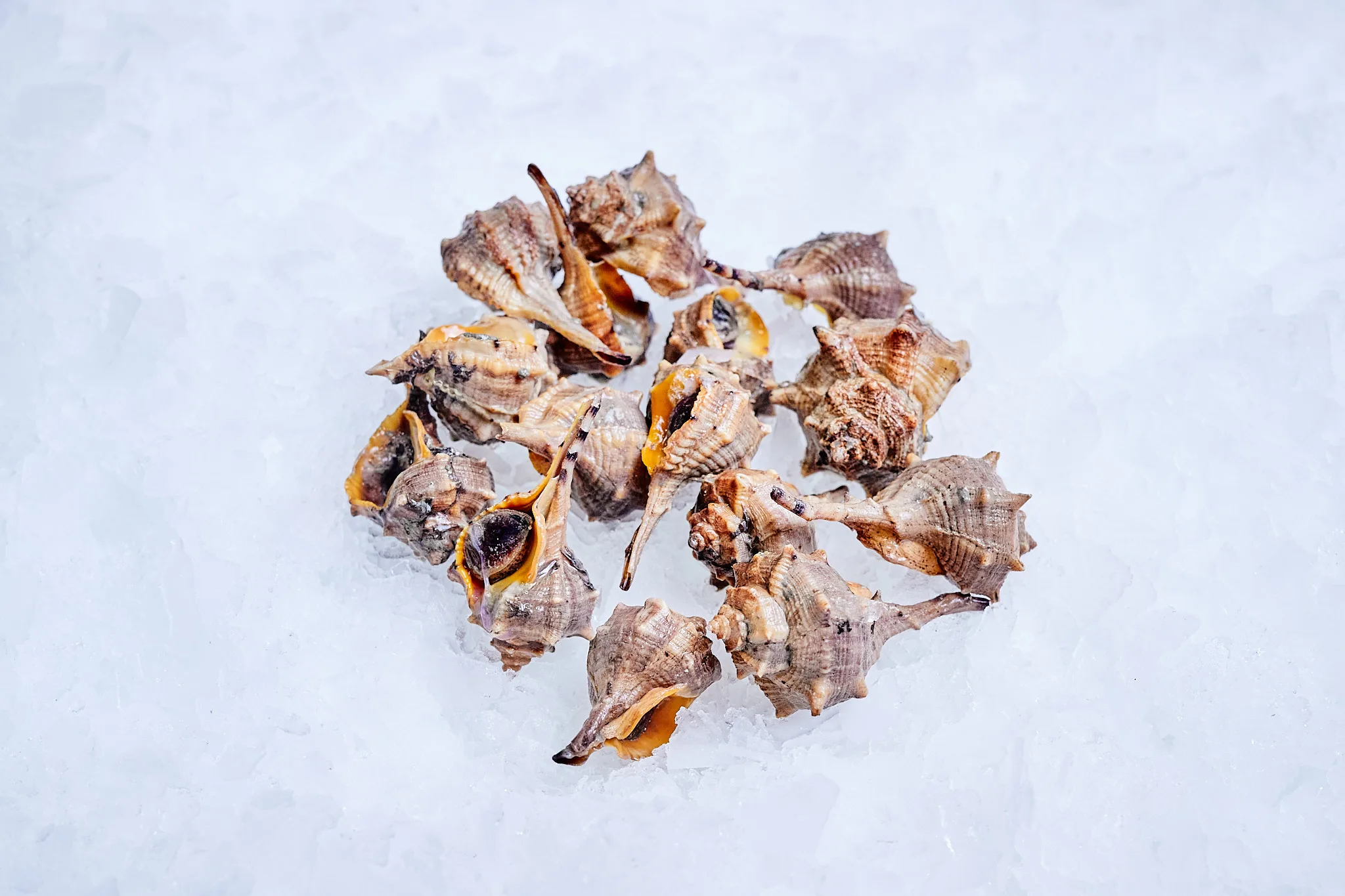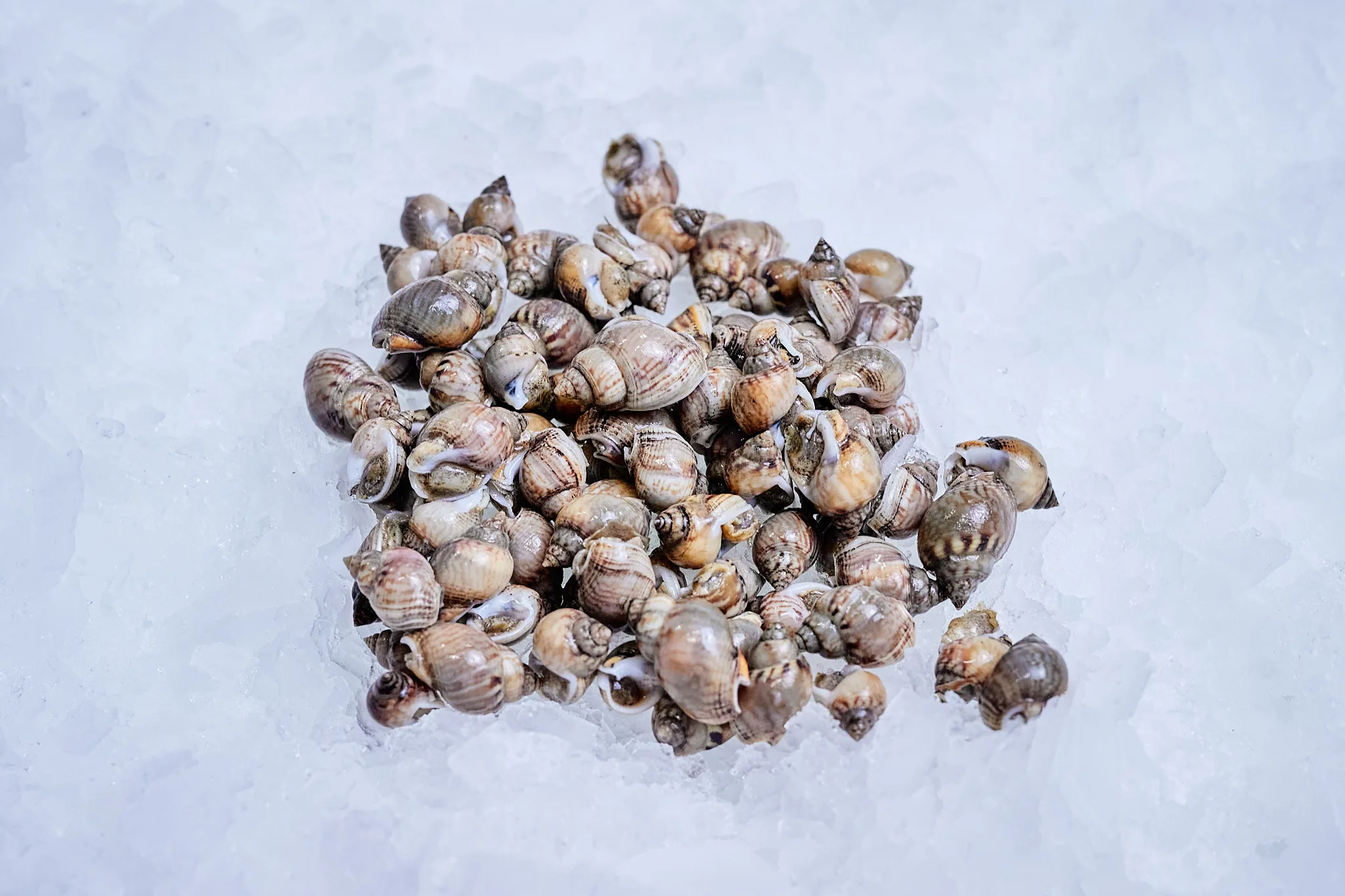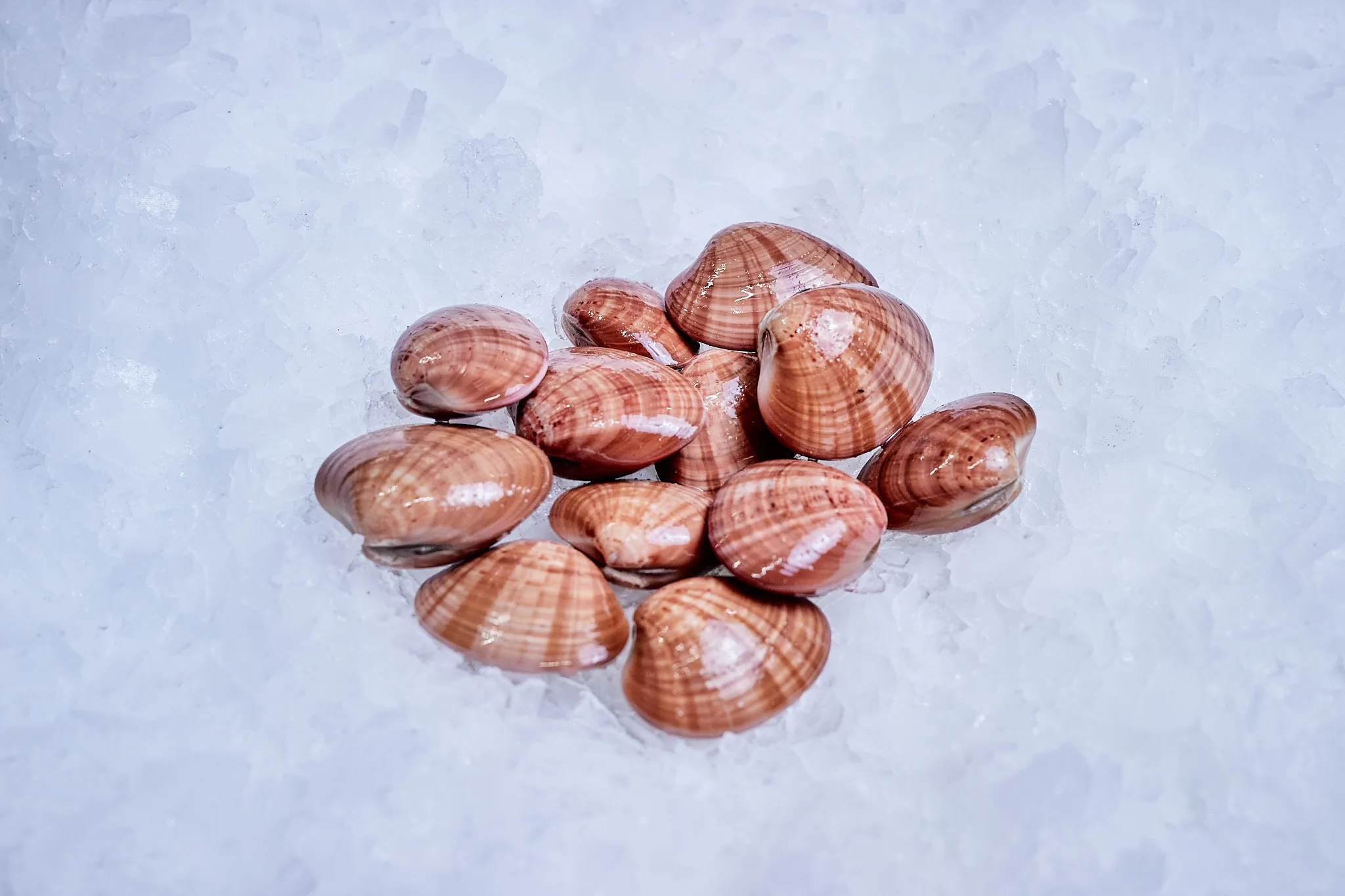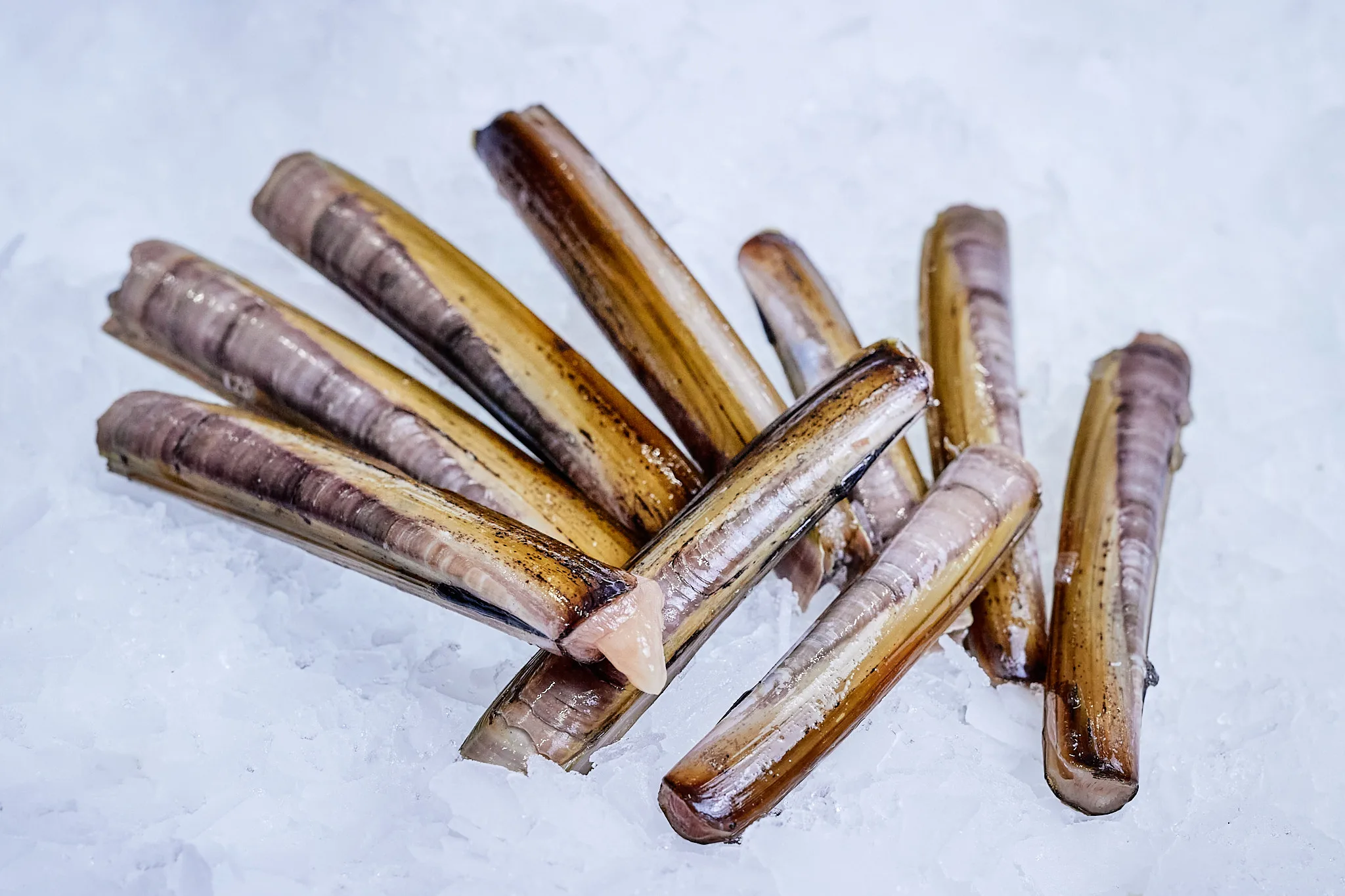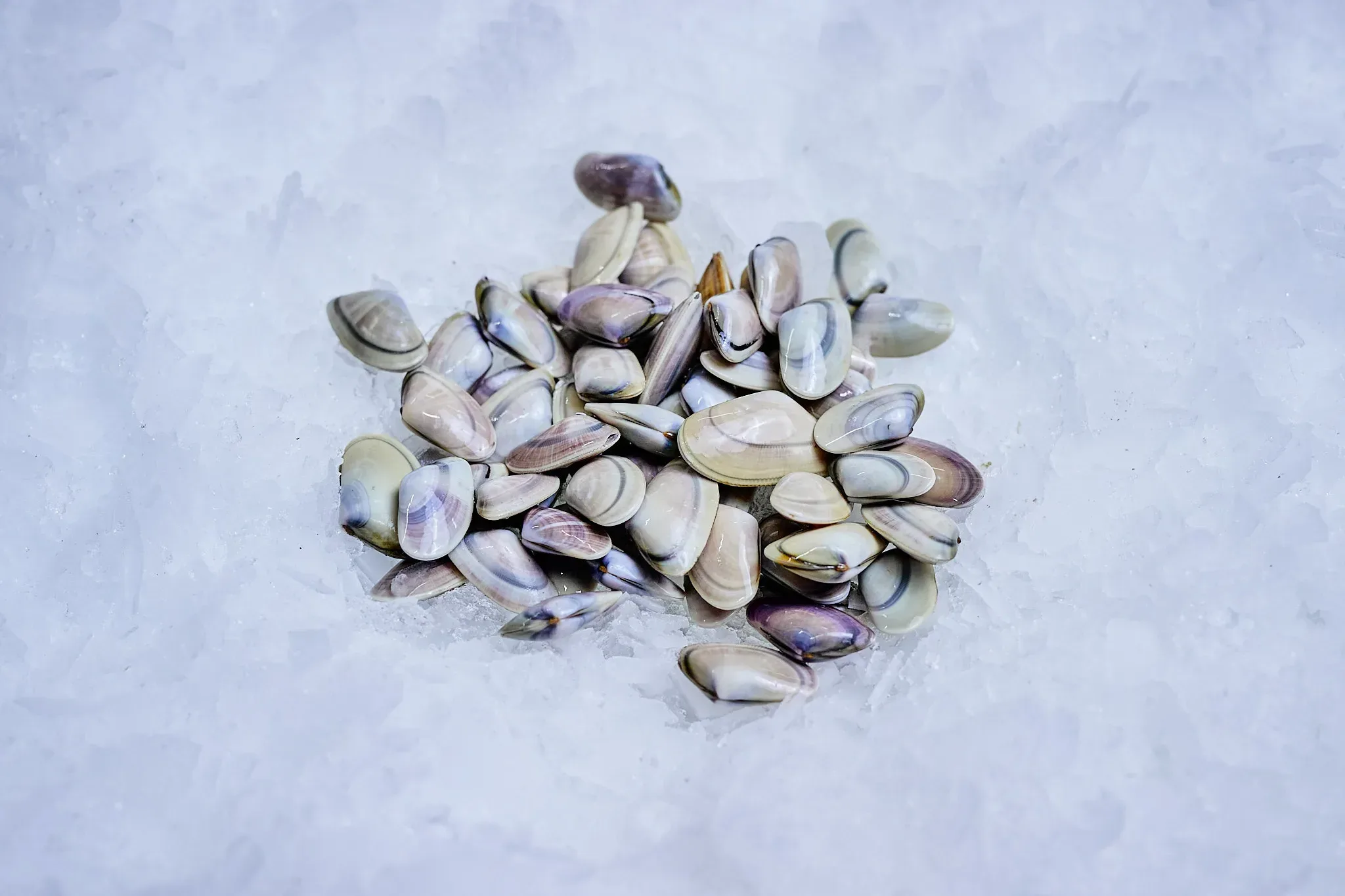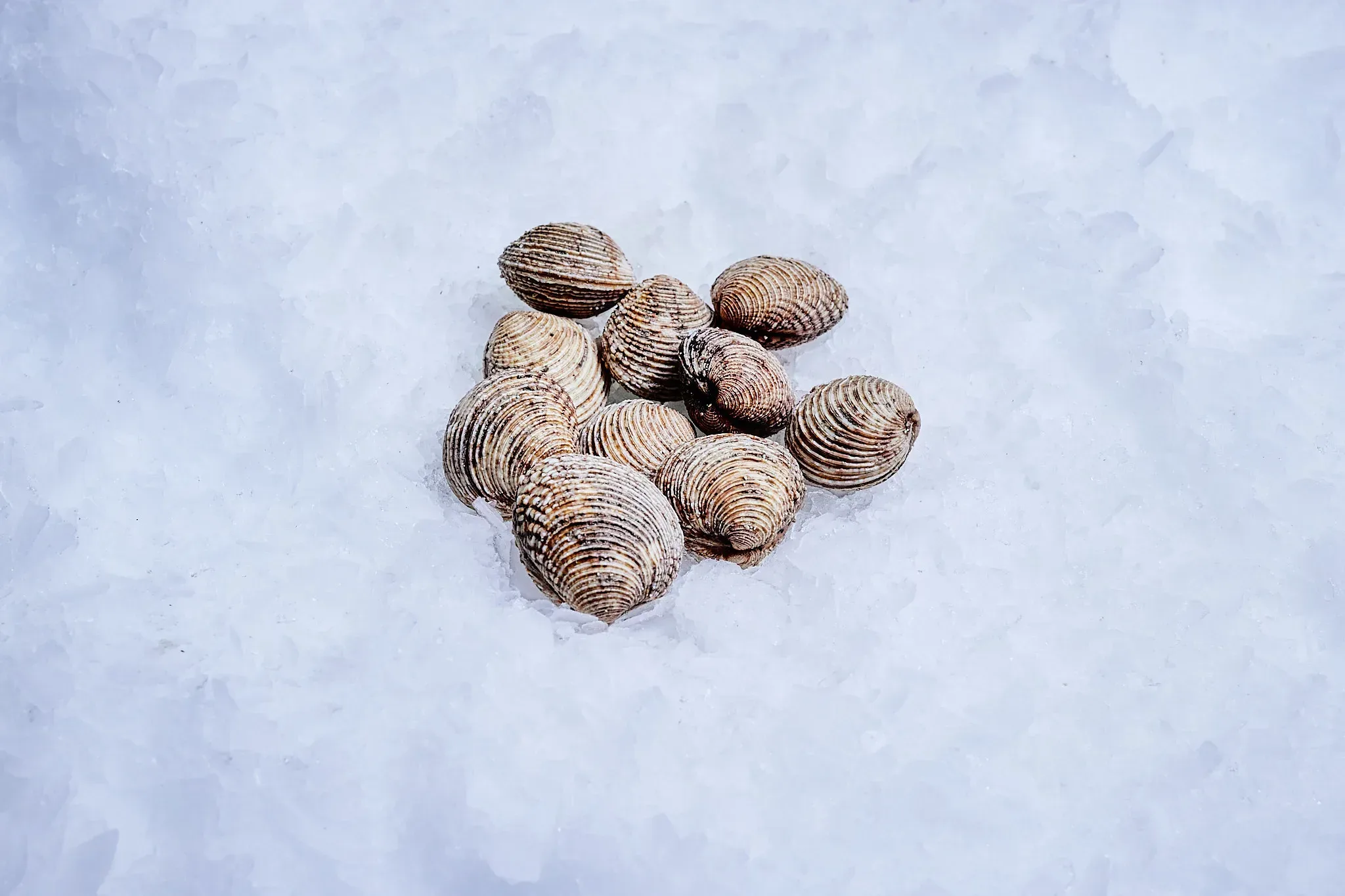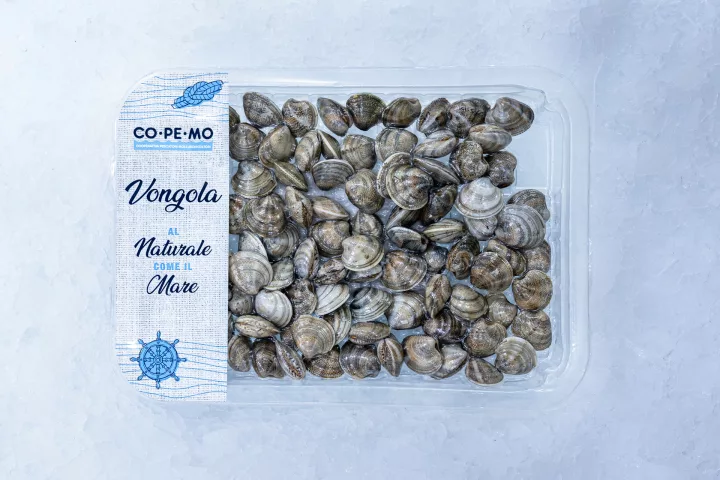Oysters
Crassostrea gigasOysters
- Scientific name: Crassostrea gigas
- Sales name: Ostriche
The oyster, bivalve mollusc native to the Pacific Ocean, is spread on rocky or muddy seabeds of coastal stretches of sea and in coastal lagoons adapting well to brackish waters. This type of mollusc secretes cementing substances through which it fixes one of the two valves to submerged bodies. The oyster shell has very variable morphological characteristics, generally oblong and clearly longer than wide, the valves are unequal (the left one is convex and larger, the right one is flattened and serves as a “lid”); the common size is 8-15 centimeters. Oyster meat is very tasty and is often eaten raw with lemon juice.
| Origin | France, Holland |
|---|---|
| Fishing season | fishing is done all year round |
| Fishing gear | train with cage |
| Packaging | 1 or 3 kg wooden boxes |
|---|---|
| Storage | temperature between +2° and +6° C for live and viable product. |
Chemical parameters provided for by Reg. (EC) 1881/06
| Lead | 1.5 mg/kg fresh weight |
|---|---|
| Cadmium | 1 mg/kg fresh weight |
| Mercury | 0.5 mg/kg fresh weight |
Biotoxicological parameters provided for by Reg. (EC) 853/04
| PSP (Paralytic Shellfish Poison) | 800 µg/kg |
|---|---|
| ASP (Amnesic Shellfish Poison) | 20 mg/kg of Domoic acid |
| Ac. Okadaico, dinophysis toxins and pectenotoxins | 160 µg of Okadaic acid equivalents/kg |
| Yessotoxins | 1 mg of Yessotoxins equivalents/kg |
| Azaspiracids | 160 µg of Azaspiracid equivalents/kg |
Microbiological parameters provided for by Reg. (EC) 2073/05:
| E. coli | n=5 c=1 m=230 MPN/100g M=700 MPN/100g |
|---|---|
| Salmonella | absent in 25 g |
Odour: characteristic marine
Appearance: regular without epibonds
Colour: gray background with purple or brown streaks
Meat: with a light marine flavor
Energy value: 69 kcal
Proteins: 10.2 g
Carbohydrates: 5.4 g
Fats: 0.9 g
*Data source INRAN (National Research Institute for Food and Nutrition)
The production process is kept under constant control through the HACCP method and a quality system implemented according to the principles dictated by the IFS Food standard.
Considered an allergen according to the reference directive (Reg. UE 1169/2011 s.m. e i.)
To be consumed after cooking.
Transport temperatures must be maintained between +2°C and +10°C.
The labeling complies with Reg. EU 1169/2011 s.m. e i.
With preformed polyethylene mesh (LLDPE, VLDPE) suitable for food contact or, upon specific customer request, with biodegradable and compostable label and mesh.
Keep in Touch!
To get more information, welcome to contact us at any time. We are here to answer all your questions and requests, and your opinion is of great value to us.
